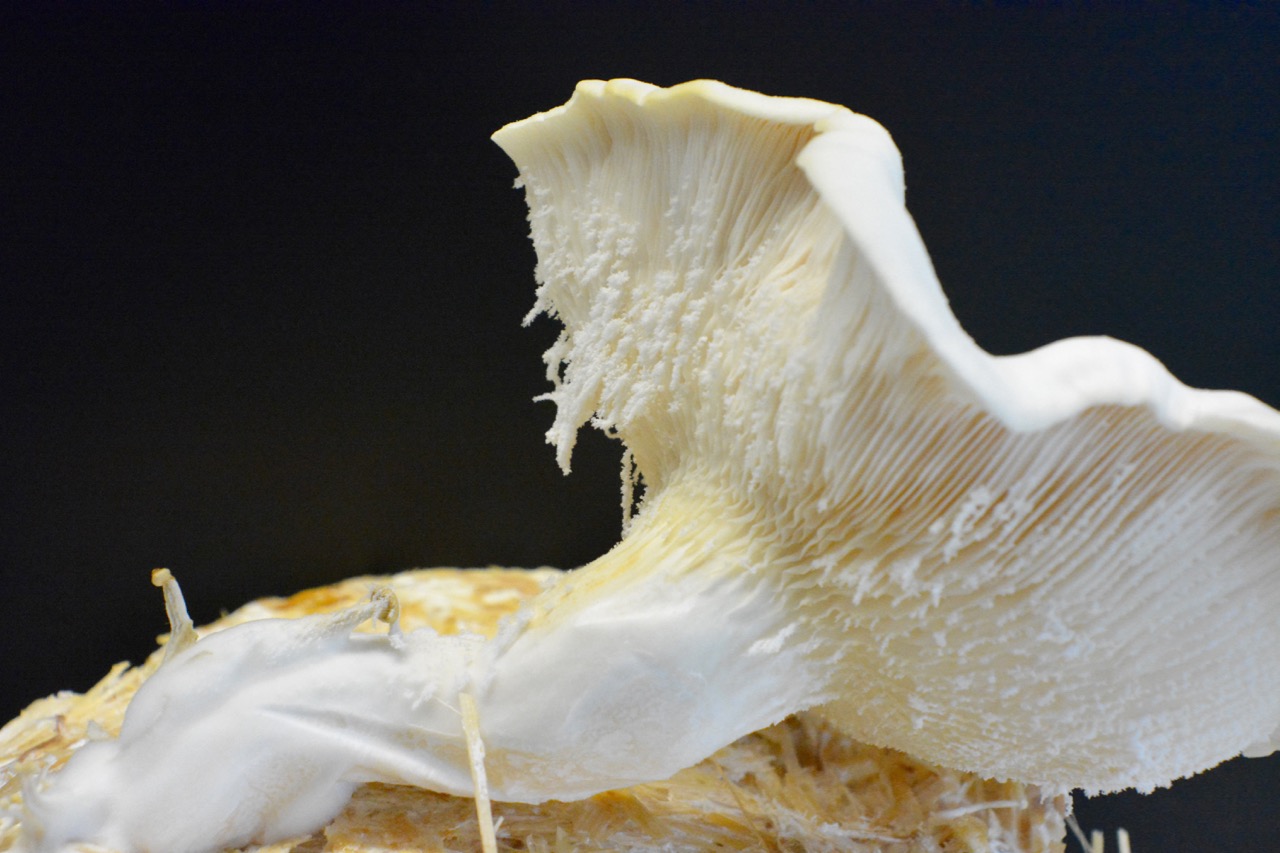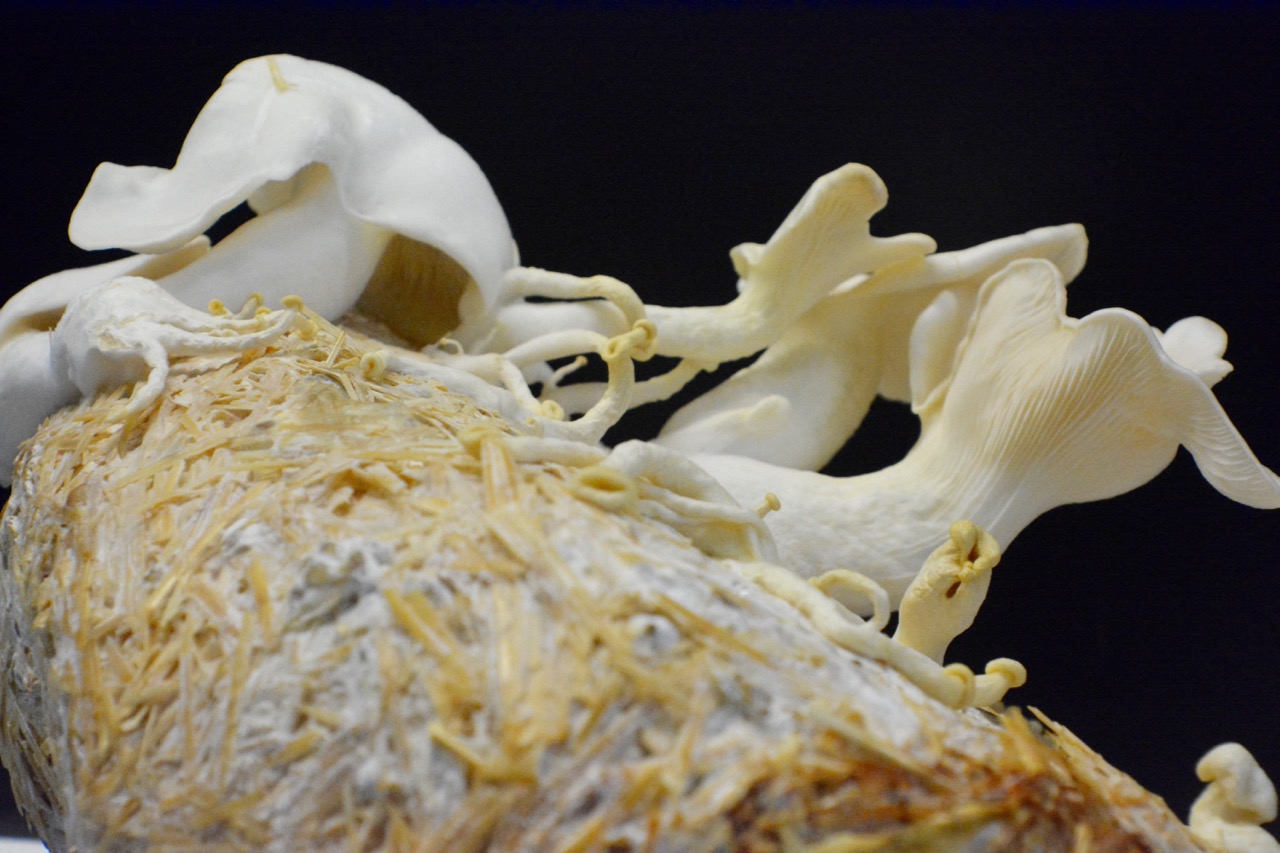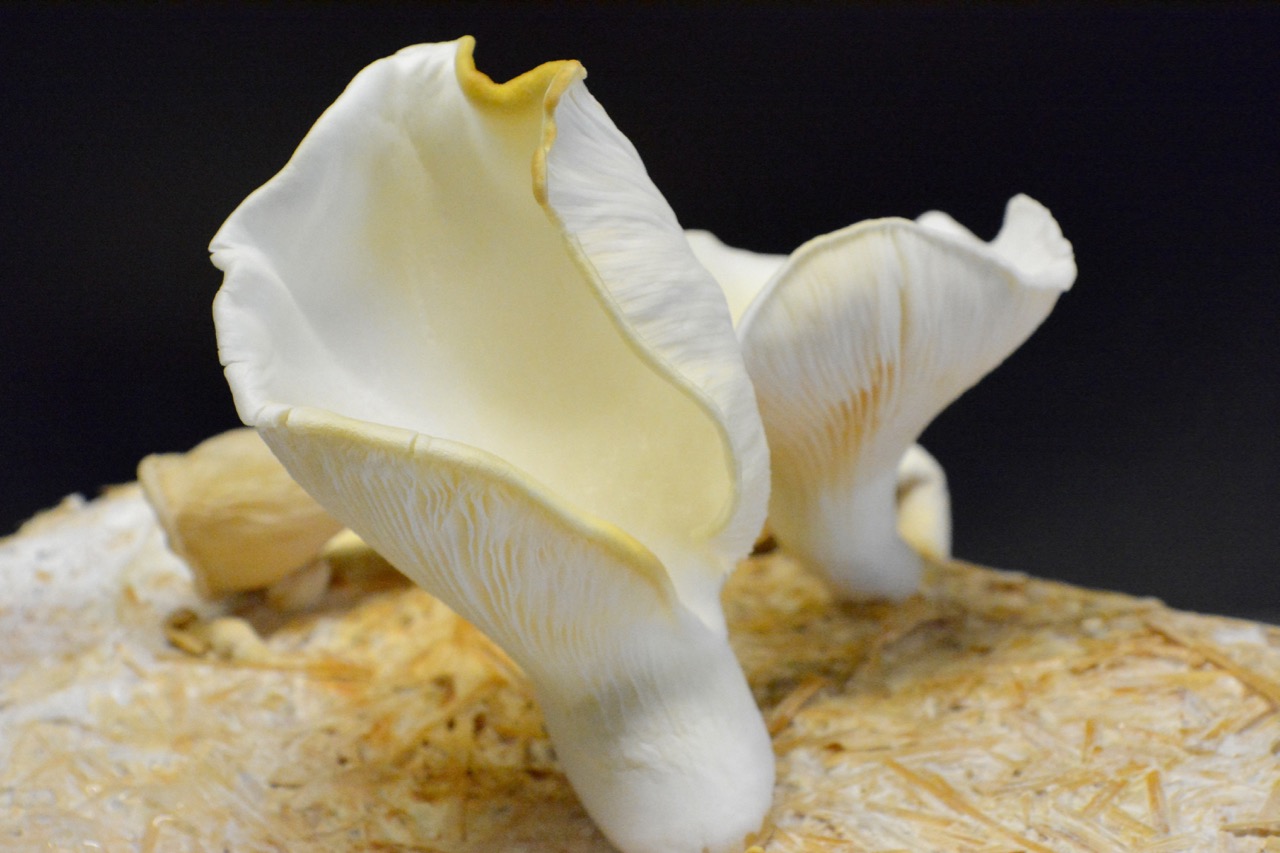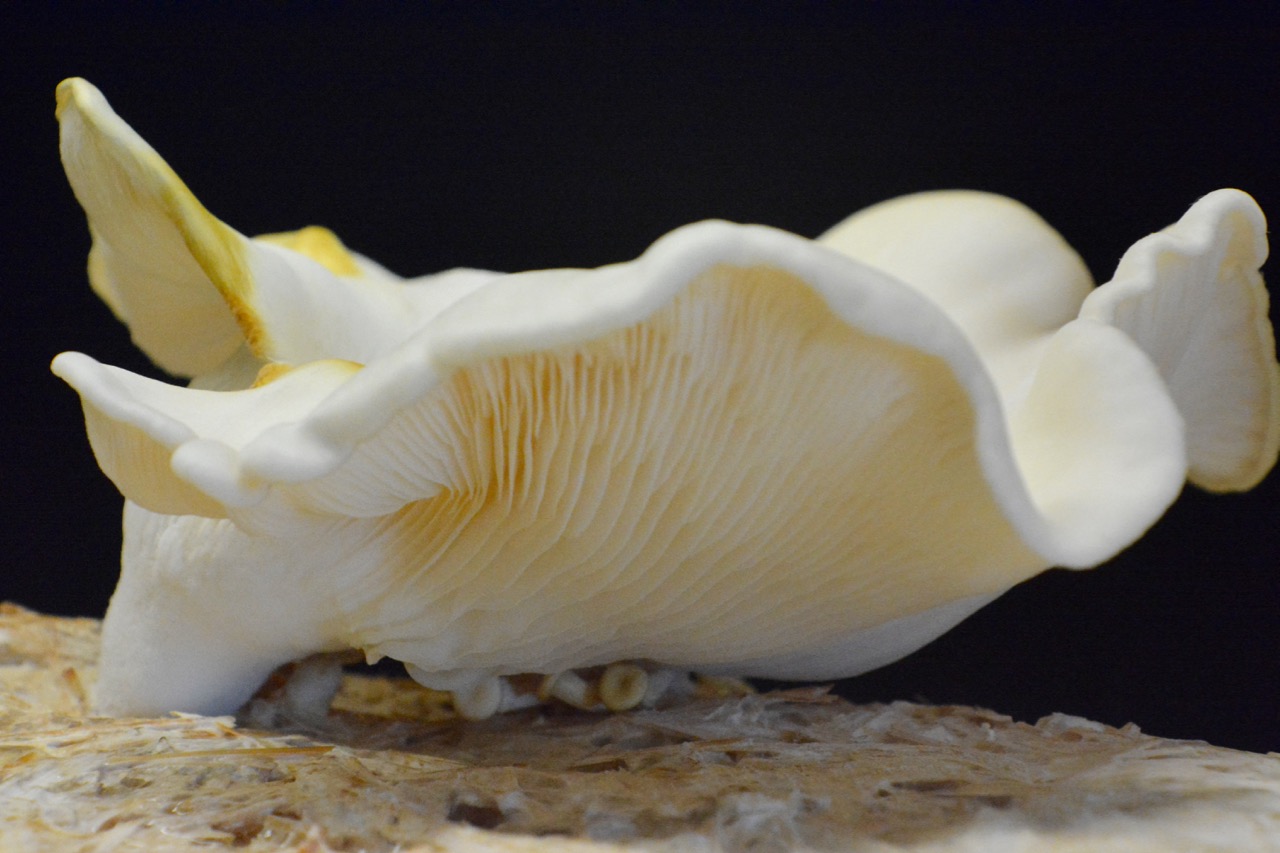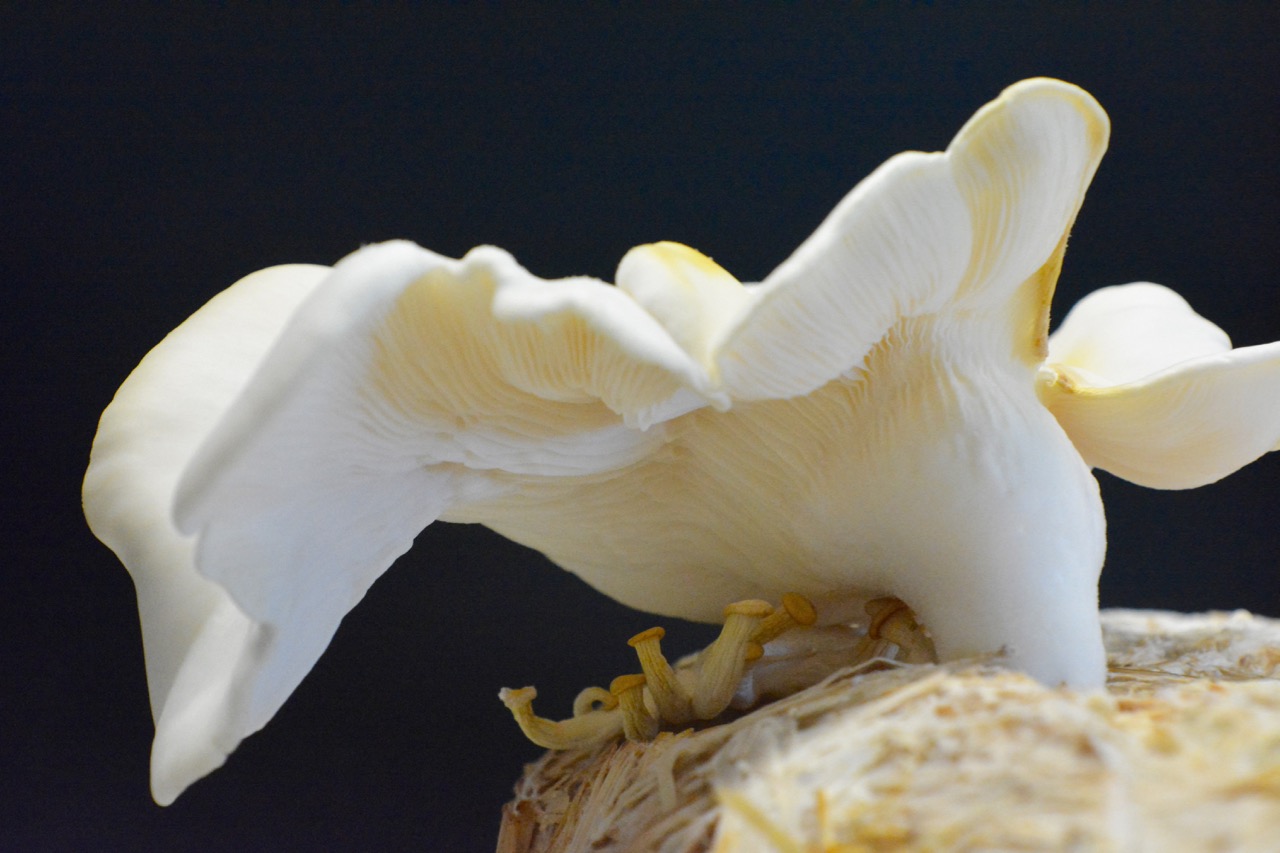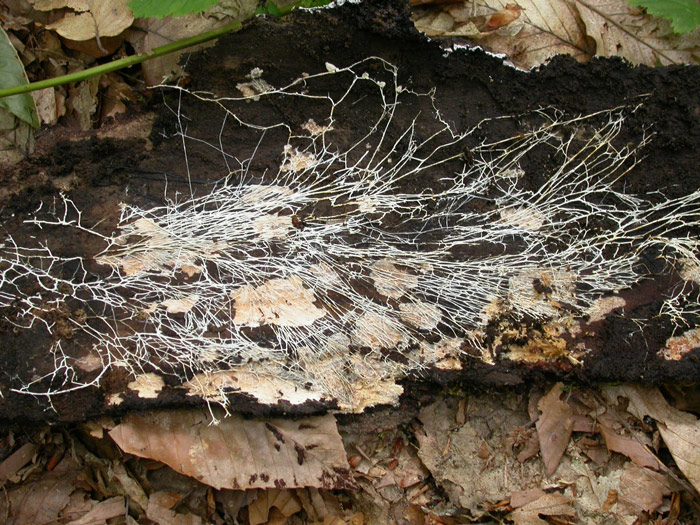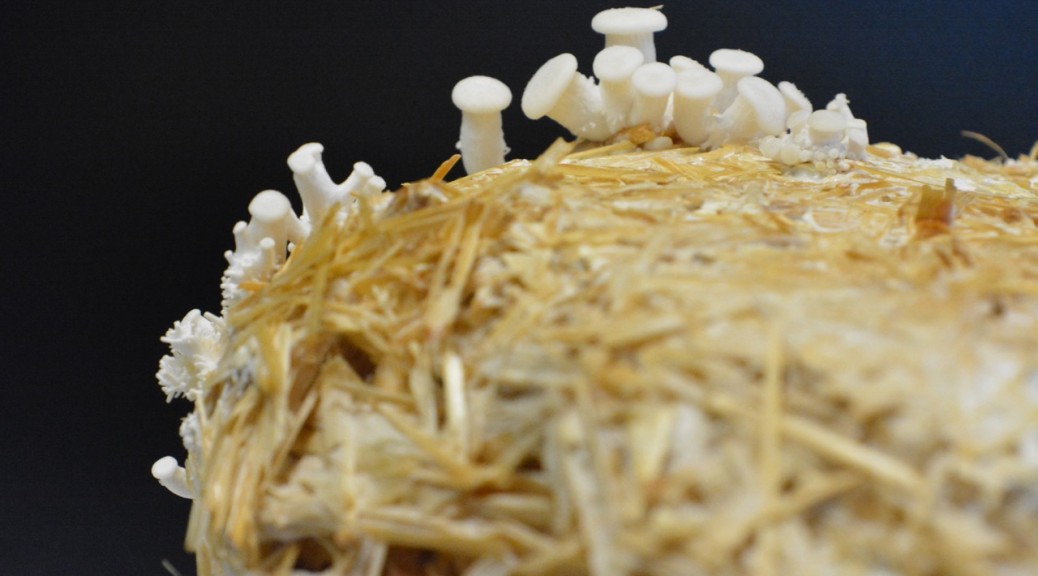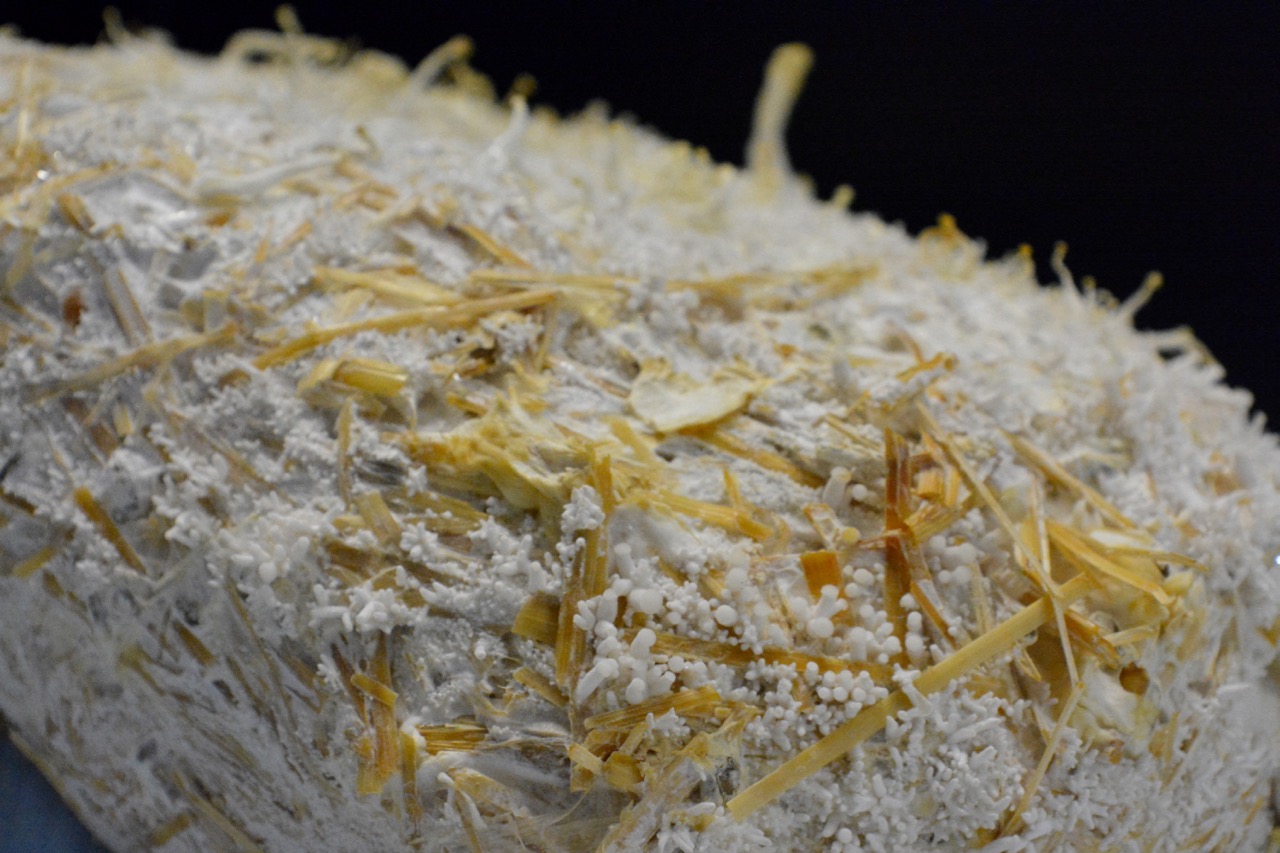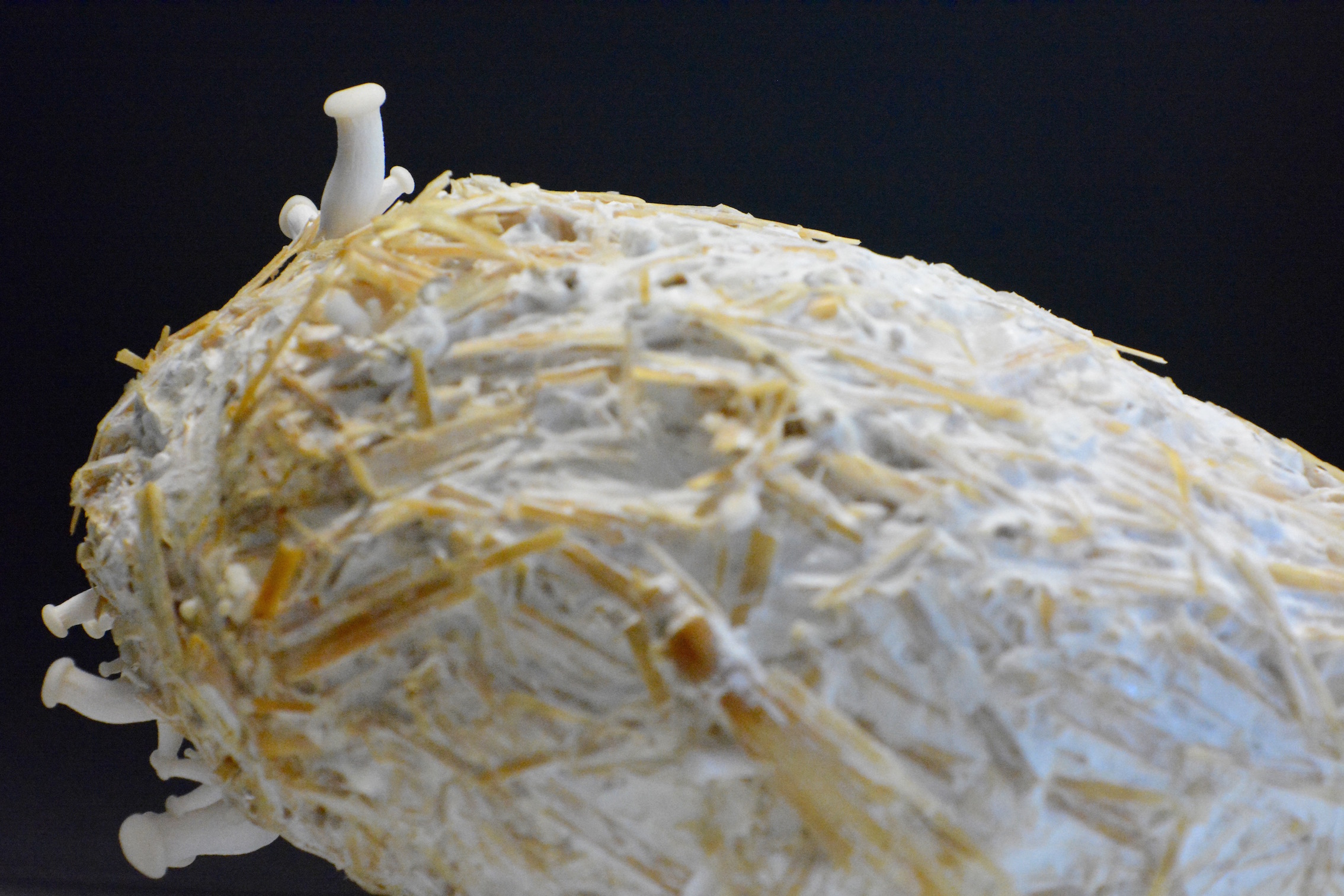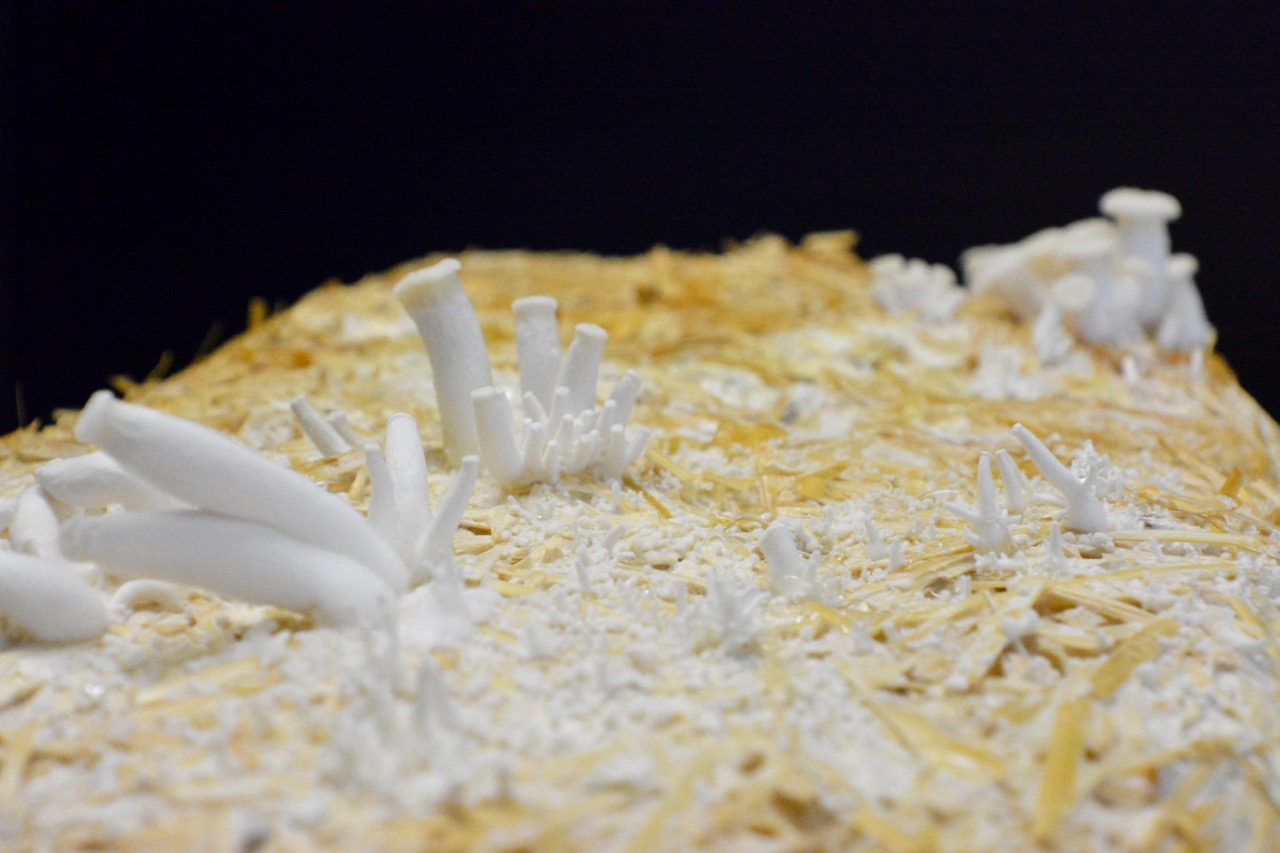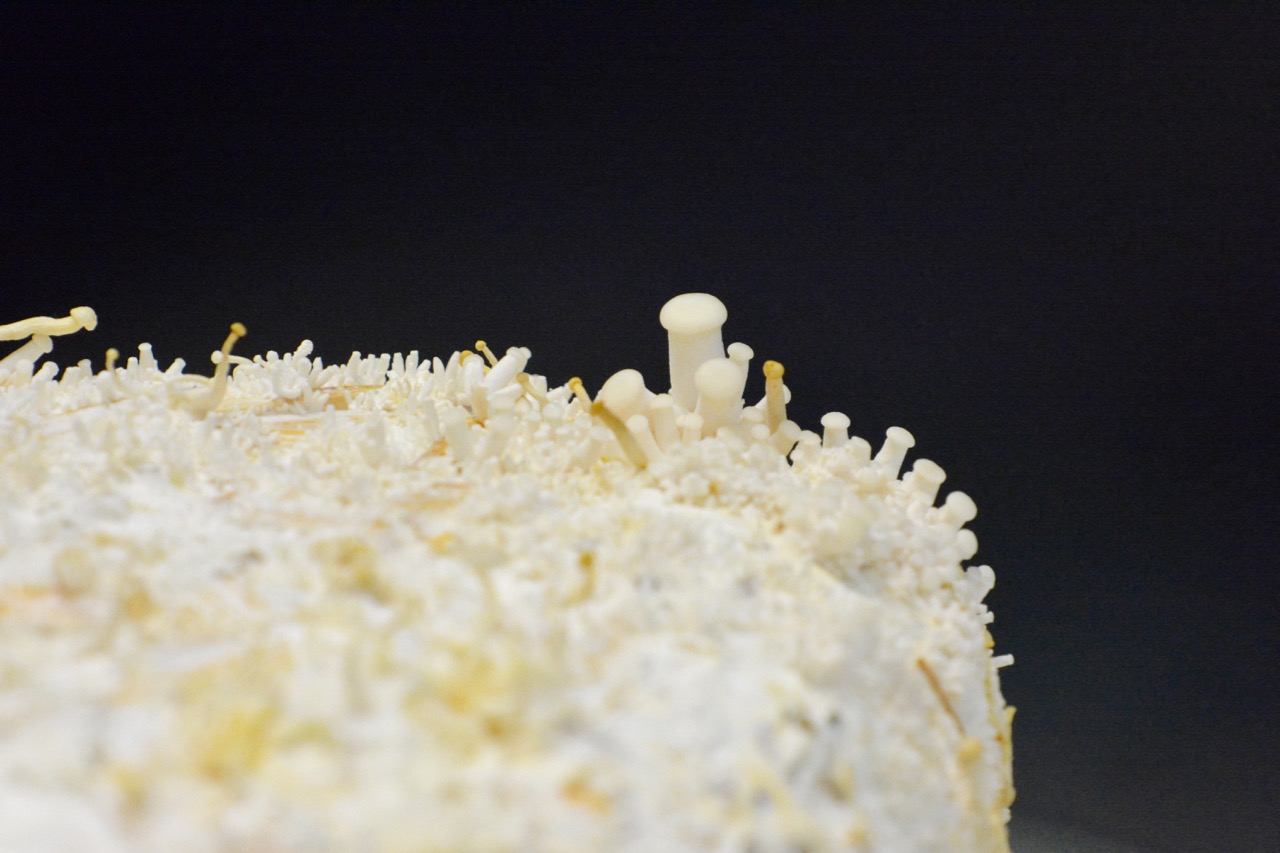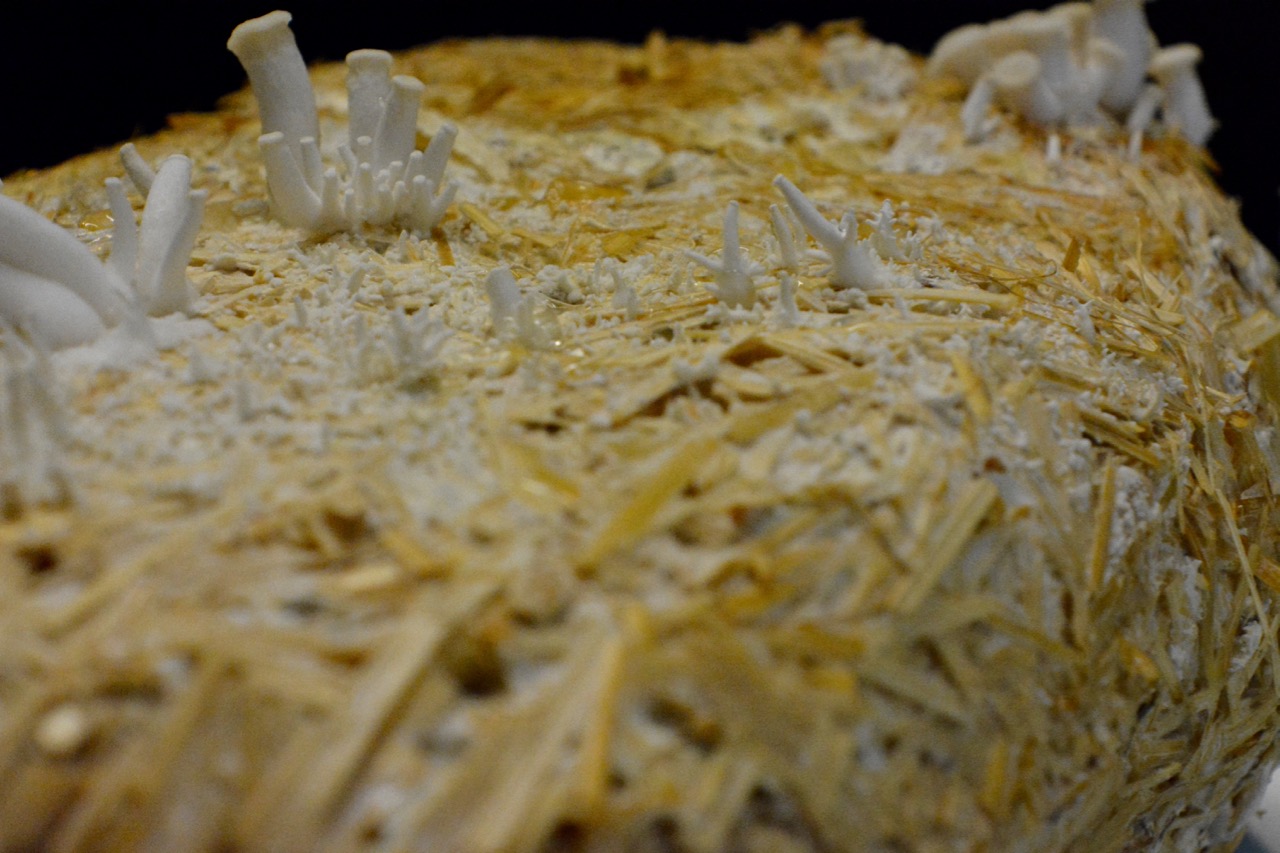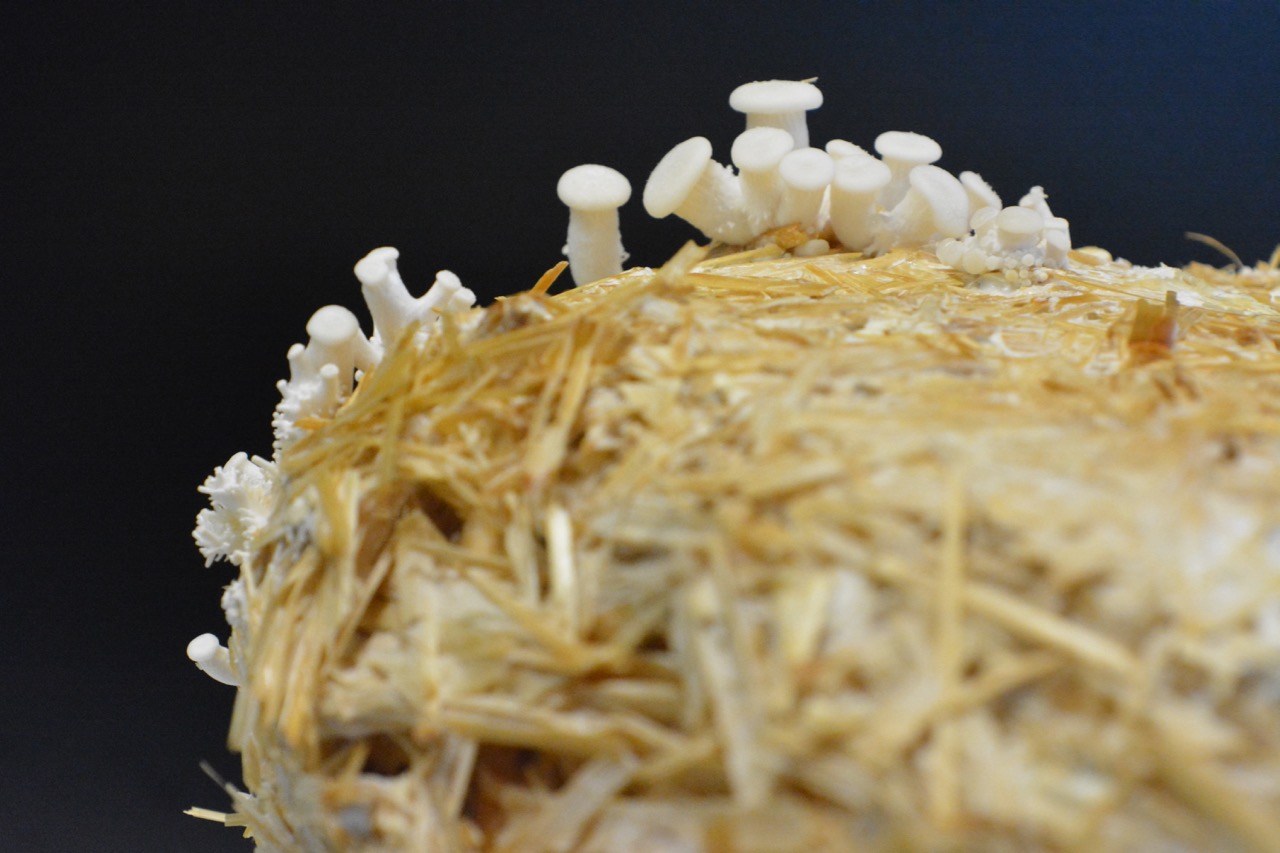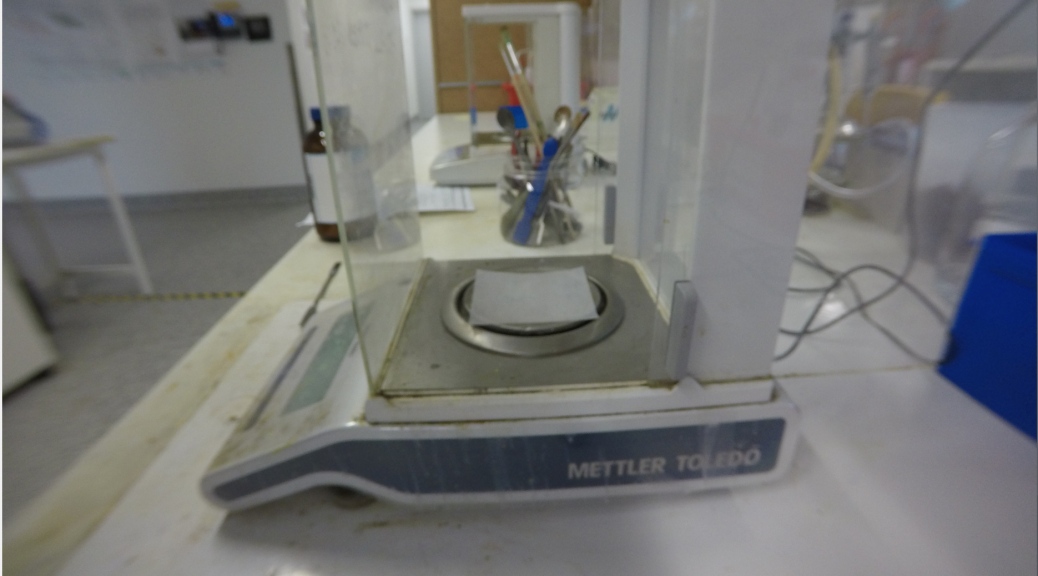We were unsure how the mushrooms would cope in the presence of the precursors of the MOF but so far they seem to be thriving.
All posts by Jiann
“…ideas are to be found in the same way that you find wild mushrooms in the forest, by just looking…
…you can’t just come upon them directly, they come to you as things hidden.”
John Cage
Little known fact; legendary composer of experimental sounds, John Cage, was an ardent mushroom hunter. Which begs the question: how did his love of mushrooms, their unpredictable rhizomic structures, affect his art?
Through his art, Cage forced listeners to attend to the sounds around them, composed and incidental, a skill enriched by mushroom hunting he believed . In one of the sections of his work, Indeterminacy (#113), he seems to make explicit this bond:
Music and mushrooms:
two words next to one
another in many dictionaries.
Where did
he write The Three-Penny Opera?
Now he’s
buried below the grass at the
foot of High Tor.
Once the season
changes from summer to fall,
given sufficient
rain, or just
the mysterious dampness that’s in
the earth,
mushrooms grow there,
carrying on,
I am sure,
his business of working with
sounds.
That we
have no ears to hear the
music the spores shot off
from basidia make obliges us
to busy ourselves microphonically.
Cage explained how this passionate relationship started;
“During the Depression, in California, I had no money. I was living in Carmel and around my shack grew mushrooms, I decided they were edible and lived on them.”
An amateur mycologist, Cage taught a class on mushroom identification at the New School for Social Research, he revived the New York Mycological Society in 1962, and his extensive fungi collection, is now housed at the University of California, Santa Cruz. In assembling his co-authored book, The Mushroom book, Cage left the visual presentations of his writings to the Chinese I Ching system of chance, a common method of decision making when creating his art to foregrounding indeterminacy.

Rhizomorphs
Human Hair in your bread
During my research on baking bread I found this tasty morsel.
Disturbing fact #2, 737,298:
Human hair is being used in many factory-made baking products. It is being used to synthesis an amino acid called L-cysteine (L-cys), a ubiquitous food additive.
L-cys puts the bounce in a loaf of bread and extends the shelf-life in industrially produced baked goods. The hair, it would, seem is mostly sourced from Chinese hair salons.
Read more: http://www.motherjones.com/politics/2010/03/human-hair-additive-your-food/
First Bloom of Oyster Mushrooms
Taking MOFs out of the lab and into the kitchen
When I first learnt about Metal Organic Frameworks (MOFs), not so long ago, they were introduced as programmable, designer nanomaterials conjuring up notions of white coats, specialised machinery, and clinical procedures.
What I’ve learnt from my time at CSIRO is that this is the common scene in the production of most MOFs, particularly those programmed for maximum absorption of their guest molecule; a very specific set of conditions need to be in place to produce a MOF that absorbs large amounts of carbon dioxide.
However there are some MOFs that require an altogether more low-fi approach to their synthesis. In fact MOFs have recently been found in the thawing permafrost of Siberia, formed long before any research lab ever existed.
Could MOFs be formed closer to home? In the kitchen? Under what conditions?
Fermentation
Fermentation is an ancient practice originating before we knew that gut micro-floral health was even a thing. Humans have used fermentation to produce drinks and beverages since the Neolithc age in preserving foods and producing alcoholic beverages. You may also have felt its affects of fermentation after exertion when oxygen-starved muscle cells collect lactic acid from lactic acid fermentation.
Zymology (the science of fermentation)
As a metabolic process fermentation began billions of years ago, before our planet had such an oxygen-rich atmosphere. It is the primary way that micro-organisms extract energy from organic nutrients in the absence of oxygen; by consuming sugars and transferring them to organic acids, gases, or alcohol.
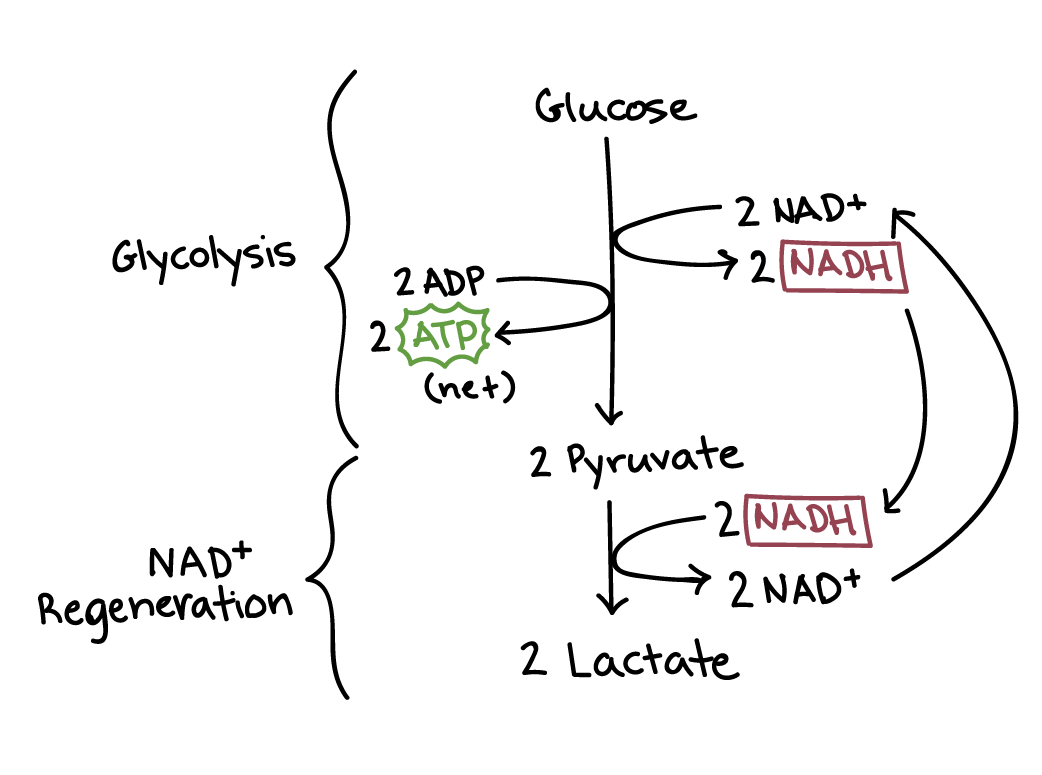 Given that the human body contains more microorganism cells than human cells, most of which reside in our gut, which is a low oxygen environment, fermentation occurs in our stomachs.
Given that the human body contains more microorganism cells than human cells, most of which reside in our gut, which is a low oxygen environment, fermentation occurs in our stomachs.
Fermentation gives rise to carbon dioxide; this is captured by ethanol manufacturers and used to prepare dry-ice for use in other industrial applications.
MOFs found in nature
Metal Organic Frameworks (MOFs) have been found in the thawing permafrost of Siberia. The Siberian minerals in question, stepanovite and zhemchuzhnikovite, were discovered initially between the 1940s and 1960s but the technology wasn’t available to examine their nano-structure.
Lead researcher Tomislav Friščić from McGill University in Canada commented that the find, “completely changes the normal view of these highly popular materials as solely artificial, ‘designer’ solids, adding, “This raises the possibility that there might be other, more abundant, MOF minerals out there.”
Learning this news left me thinking about the various conditions enable the formation of MOFs outside of the laboratory. As we discover more MOF “out there”, which we inevitably will, we will learn more about MOF formation. Will this lead to innovations in MOF production based on biomimetic processes?
Read more about the discovery in the press release from McGill University.
Synthesising Eu(BDC) MOF
…and some MOFs are easy to synthesise.
So easy to synthesise that I was making Eu-BDC on my first week here.
Eu-BDC is an acronym for the European Biodiversity data centre and also for a MOF called Europium BDC.
Europium, named after the continent, is categorised as a lanthanide, or rare earth metal. he most common use of europium compounds is in making red phosphors, a material that shines when struck by electrons. The red color on a television screen, for example, may be produced by phosphors containing europium oxide. Europium oxide is a compound made of europium metal and oxygen.
Context
Context is what I hope my artistic research and non-scientific experiments will bring to the understanding of MOFs.
Context: The weaving together (latin: contentextus) of concepts about the MOFs being used in biomedical realm, outside of what is currently being explored in scientific discourse. The word context is also a term in mycology (the study of fungi) referring to the fleshy part of a mushroom.
I hope my contribution will stimulate conversations about the prospect of human consumption of MOFs; the potential, the limits, and the ethical dimensions.


